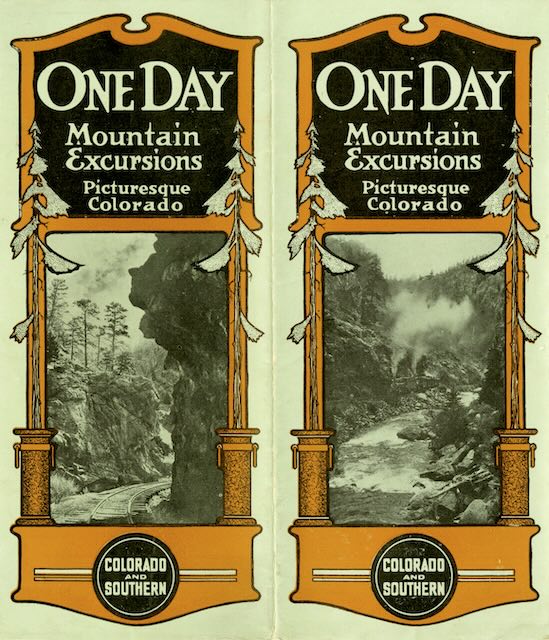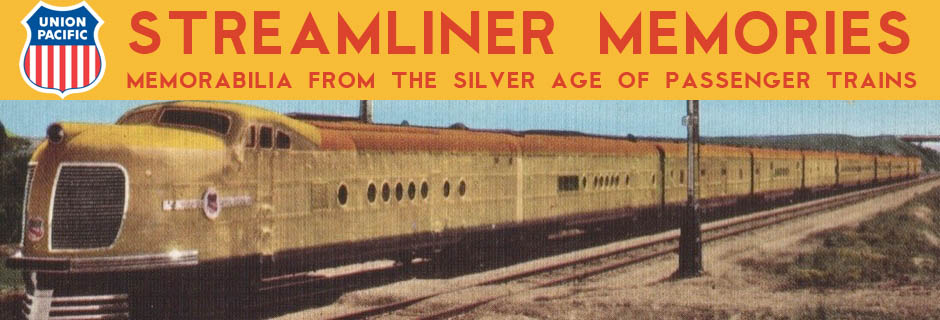The Colorado & Southern was really two different railroads. First was the standard-gauge, north-south line from Wendover Wyoming to Fort Worth Texas. Second were several lines into Colorado mining districts, including Leadville and Cripple Creek, that were mostly narrow gauge.
 Click image to download an 5.0-MB PDF of this 12-page booklet.
Click image to download an 5.0-MB PDF of this 12-page booklet.
Union Pacific consolidated many of these lines into the Union Pacific, Denver and Gulf Railway in 1888, but lost control of them in the Panic of 1893. In 1898 the lines were reorganized and named Colorado and Southern. Under James J. Hill’s regime, the Burlington took control of them in 1908.
As suggested by the names of both the Union Pacific and Burlington lines, these two railroads were mainly interested in the north-south route and access to Texas ports. Burlington didn’t mention any passenger trains on the mountain routes in its timetables; in fact, the centerfold map of many of the timetables didn’t even show the lines.
This booklet describes destinations that could be reached in 1924 from Denver on Colorado and Southern trains, including trains into the mountains. First is the Georgetown Loop, a train from Denver to Silver Plume that required a nine-hour roundtrip and cost (depending on the day of the week) from $2.65 to $3.96 (about $50 to $75 in today’s money). Second was a line from Denver up the Platte Canyon, where people could stay at a variety of resorts that emphasized fishing and sightseeing.
The other destinations described in the booklet were reached by the standard-gauge trains. First was Colorado Springs, where people could take the Manitou and Pikes Peak Railway, which is described in the booklet but wasn’t part of the Colorado & Southern. Similarly, people could take the standard-gauge line to Pueblo, from which they could tour the San Isabel National Forest, which in the 1920s may have been Colorado’s premiere recreation forest.
C&S trains to Boulder provided access to the Colorado National Forest (now known as the Roosevelt National Forest). Finally, trains north of Denver reached several cities from which people could take auto tours of the “Rocky Mountain National-Estes Park District.” Although Rocky Mountain National Park was created in 1915, there were few roads into the park in 1924, so it wasn’t the destination it would become in later years. Estes Park was still a beautiful and easily accessible location, but clearly the Georgetown Loop and Pikes Peak were more popular at the time.
